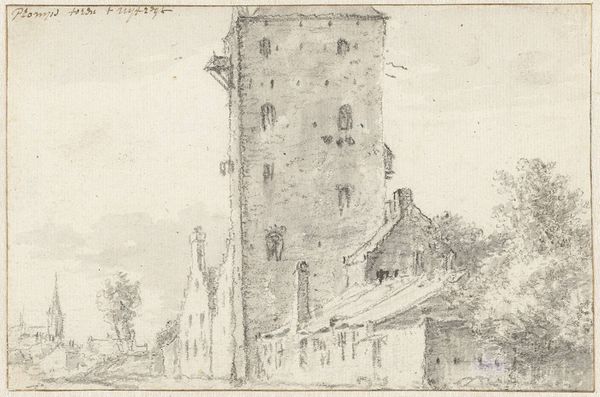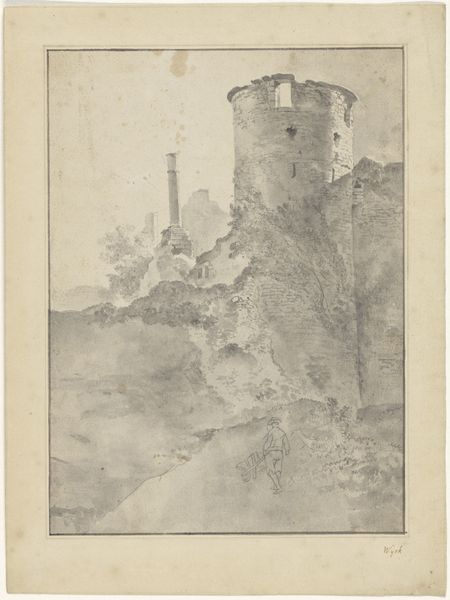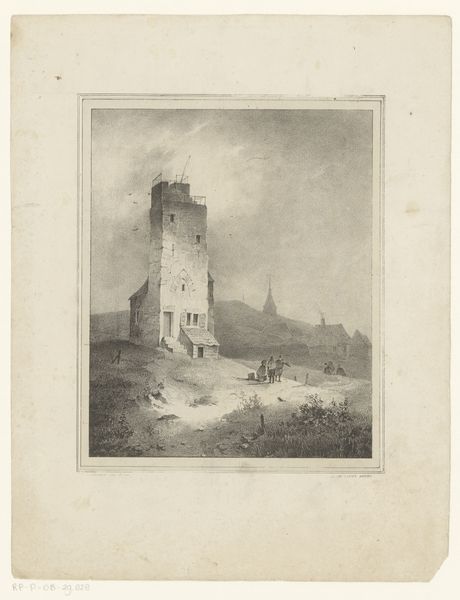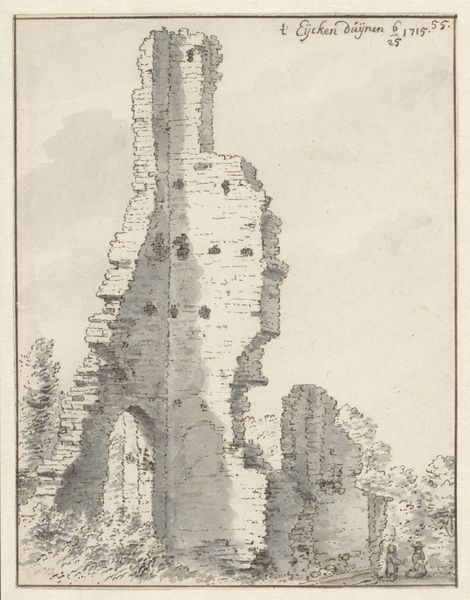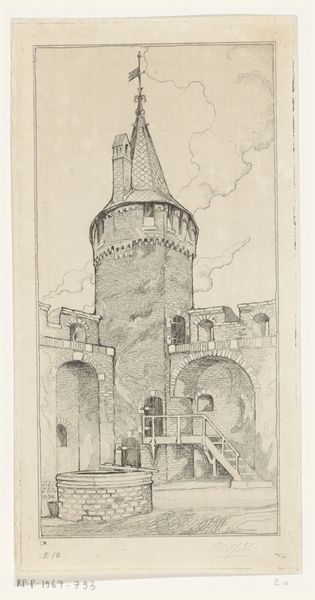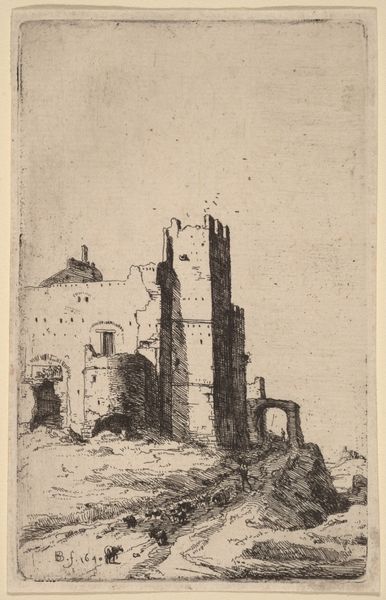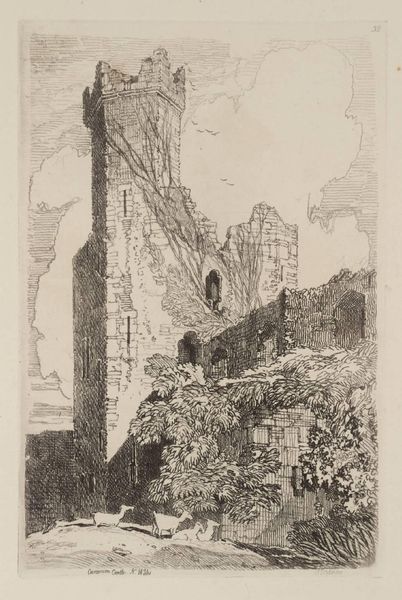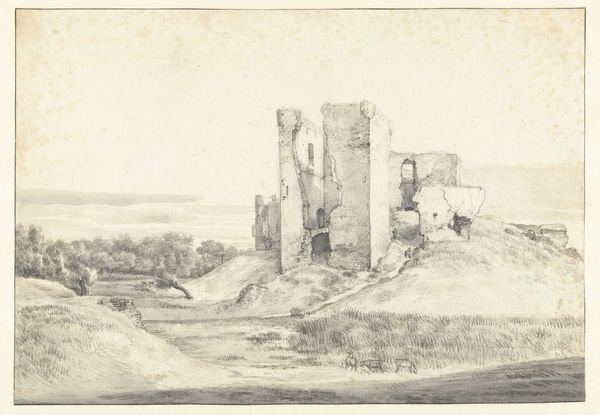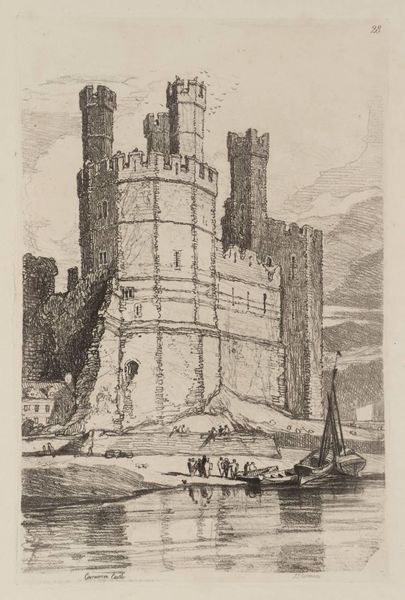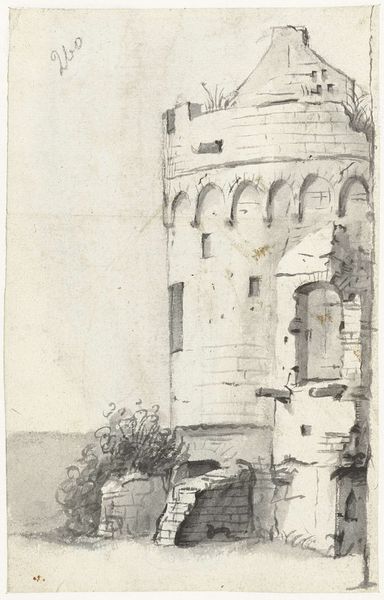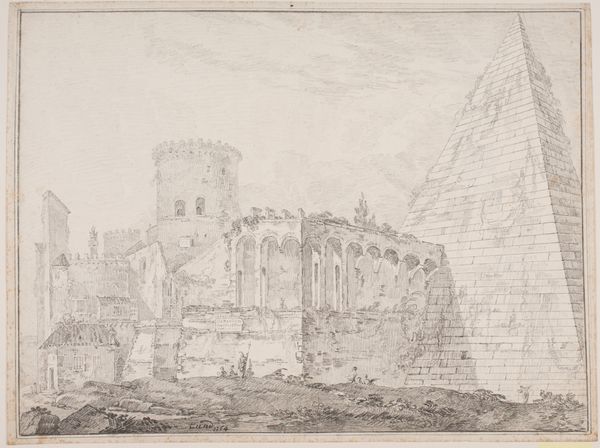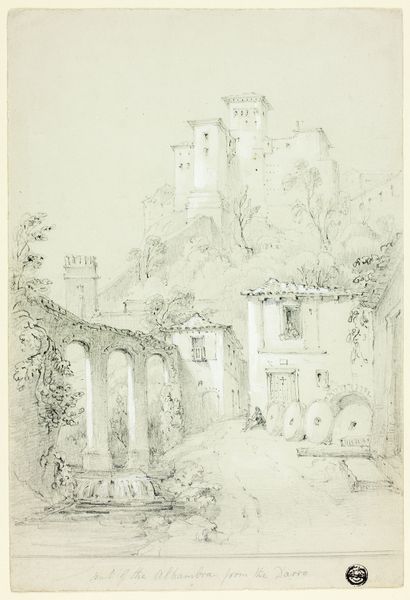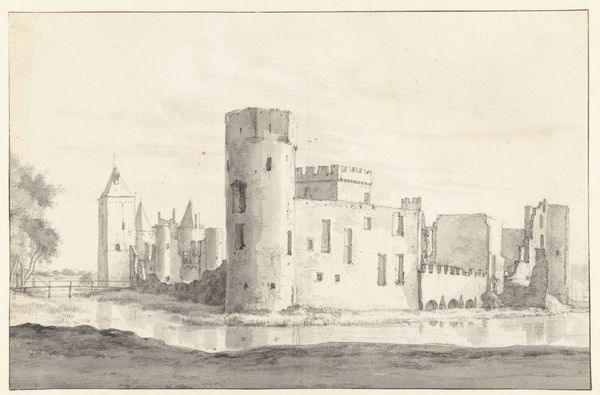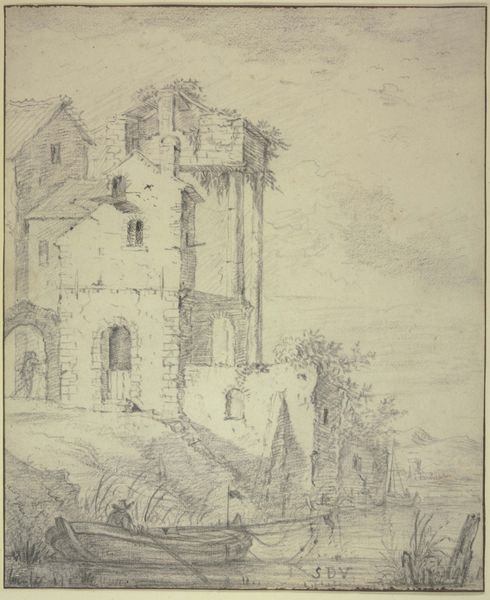
Alter Turm mit einer Holztreppe (Bijlhouwerstoren an der Stadtmauer von Utrecht_)
0:00
0:00
drawing, ink, pencil, chalk, graphite, architecture
#
pencil drawn
#
drawing
#
netherlandish
#
baroque
#
landscape
#
ink
#
pencil drawing
#
pencil
#
chalk
#
graphite
#
14_17th-century
#
cityscape
#
architecture
Copyright: Public Domain
Curator: This drawing, whose title translates to "Old Tower with a Wooden Staircase (Bijlhouwerstoren on the City Wall of Utrecht)," is attributed to Roelant Roghman and resides here at the Städel Museum. The artwork employs chalk, graphite, ink and pencil on paper to depict a somewhat decrepit tower, seemingly integrated into the domestic architecture surrounding it. Editor: I feel like I’m looking at a dream – or maybe a slightly unsettling memory. The gray washes give it a very ethereal, faded feeling. There's an unusual wooden staircase clinging to its side, suggesting a precarious balance between defense and everyday life. Curator: Precisely. It makes you wonder about the societal functions embedded in this structure – the dual purpose of guarding and dwelling. The materials, especially the combination of drawing media, allowed for a detailed examination of the tower’s stonework versus the timber constructions added later. What kind of labor, for instance, do we imagine going into these starkly different building efforts? Editor: Good question! Thinking about it, that ladder – was it always there? Was it built to avoid damage on lower levels or simply to serve a newly conceived domestic space? And the little figure perched near the tower entrance – is that a watchman or a resident coming home? Roghman has a lovely eye, leaving these delicious narrative threads for us to pluck. Curator: Absolutely, and looking closer, notice the interplay of line and tone achieved through various pencils, chalks, and ink. This suggests not only Roghman's skill but also perhaps the changing needs of topographic documentation—balancing accuracy with artistic license. The consumption of cityscapes like this fed into a larger desire for both knowledge and ownership of the Dutch landscape. Editor: Yes, you're right, that soft, almost blurry technique contrasts with those sharp lines indicating the tower's structure. This evokes, for me, a sense of the passage of time—a sort of hazy permanence, if that makes sense? Like the tower endures even as the artist, his marks, and the lives within it, are ephemeral. It becomes a touching tribute to the way memory works, doesn’t it? Curator: In the end, this image brings us to the intersection of craft and place, making us aware of what the material processes can express beyond merely what is depicted. Editor: Yes, the artwork serves as a bridge from tangible edifice to pure dream-place. I think Roghman knew this all along.
Comments
No comments
Be the first to comment and join the conversation on the ultimate creative platform.
